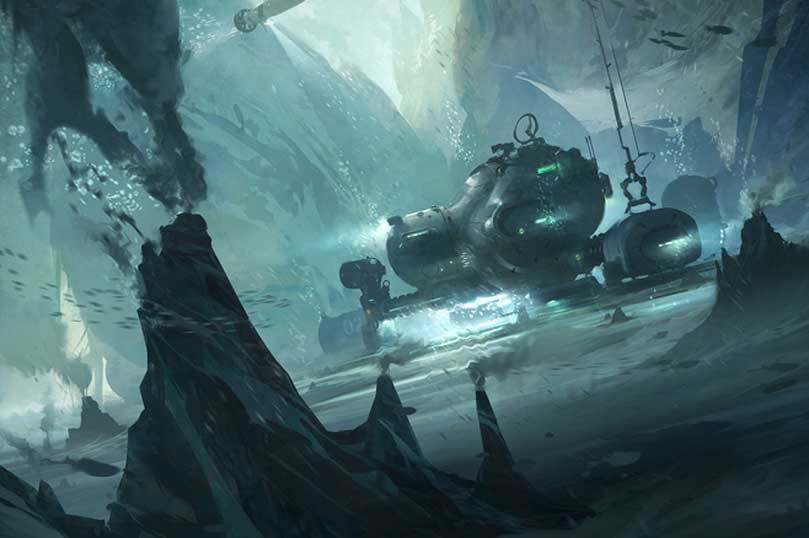Written by James Cambias
Settings are one of science fiction’s fundamental strengths. Readers of SF and fantasy love to play tourist in worlds of the author’s imagination, and an intriguing setting is a great way to draw the readers in and keep them reading while you make them care about the characters and get them to worry about what’s going to happen next.
When creating a fantastic setting, there are two approaches: crafting what you need to fit the demands of the story (what we’ll call “top-down”) and extrapolating a setting based on some basic scientific assumptions (what we’ll call “bottom-up”).
Hal Clement was probably the most famous exponent of the pure “bottom-up” method. His landmark 1953 novel Mission of Gravity was inspired by some data about a planet orbiting the star 61 Cygni (in the end the data turned out to be spurious, but that doesn’t matter). Armed only with the mass of the planet and its orbital motion, Clement built his planet Mesklin according to the state of the art of planetary science at the time. Once he had his world, he invented beings to live there, and then crafted a story about them.
In my own novel A Darkling Sea, I took a mixed approach. I was inspired by scientific discoveries about Jupiter’s moon Europa, and speculation about life in its subsurface ocean.
But I didn’t want to write a story which might go obsolete before I could even sell it. Scientists are sneaky bastards like that. Even with no probes bound for Jupiter in the next few years, they could find a way to squeeze more data out of existing observations, and discover things about Europa which would invalidate my story. I hate getting things wrong, so I moved Europa to another star system thirty light-years away and gave it a different name: Ilmatar, a goddess in the Kalevala. I made Ilmatar a little bigger and more massive than Europa, giving it more rock and less ice.
A planet’s not very interesting unless someone lives there. When I created the inhabitants of Ilmatar I used a mix of half top-down demands-of-story design and half Clementian bottom-up extrapolation. I made them blind (a very defensible assumption for creatures living in a lightless ocean) yet intensely curious, because that fit my theme. Beings absolutely incapable of perceiving the outside universe would have interesting reactions to first contact with aliens. I wanted them to be tool-using beings, which dictated bottom-dwelling crustacean-analogues rather than free-swimming fish-analogues.
An underlying theme in A Darkling Sea is how many of our “rational” motivations are no such thing. Both the human characters in the novel and their interstellar rivals the Sholen are motivated by status, sexual desire, and ideology. To throw those things into sharper relief, I made the Ilmatarans effectively sexless (they spawn, an act of about as much emotional significance to them as sharing a taxi), and largely un-social. While both my human and Sholen characters are haunted by history and worried about the future, the Ilmatarans live in an environment nearly devoid of time.
All of this had to come out in the scenes written from the point of view of Broadtail, my main Ilmataran character. Since I hate long passages in italics, I relied instead on language. The Ilmataran scenes are all in the present tense, with no time clues and no visual metaphors. The Ilmatarans can’t say that something happened, but rather that they remember it happening.
I liked Ilmatar and its people, and I liked spending time there writing the book. As I mentioned, settings are one of science fiction’s main strengths, but that’s not why I do it: world-building is fun. Who else but science fiction writers get paid for making up planets? I hope the readers enjoy reading about Ilmatar as much as I enjoyed building it.
…………………………
From the Tor/Forge January 6th newsletter. Sign up to receive our newsletter via email.
…………………………
More from the January 6th Tor/Forge newsletter:
- Books: I Like Them, Who Could Have Guessed? by Jo Walton
- Giant Hawks and Mountain Bikes: Alternative Training by Brian Staveley
- January Grab Bag Sweepstakes








My review of the book at https://esr.ibiblio.org/?p=5751
Well done! I spotted the lineage to Clement before reading your making-of essay.